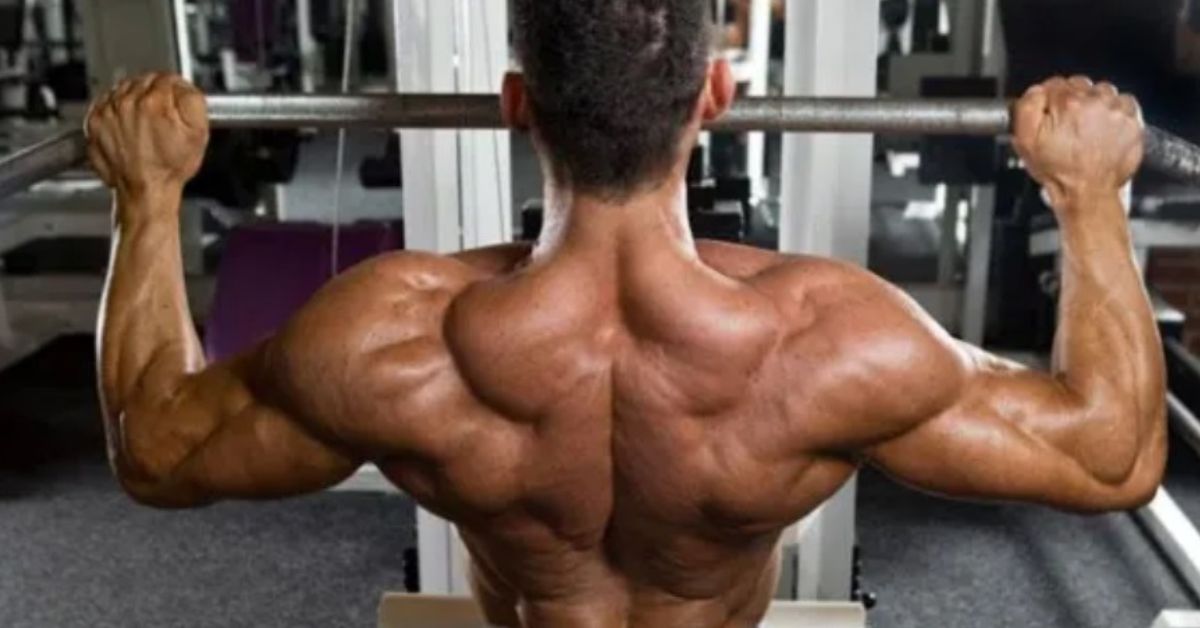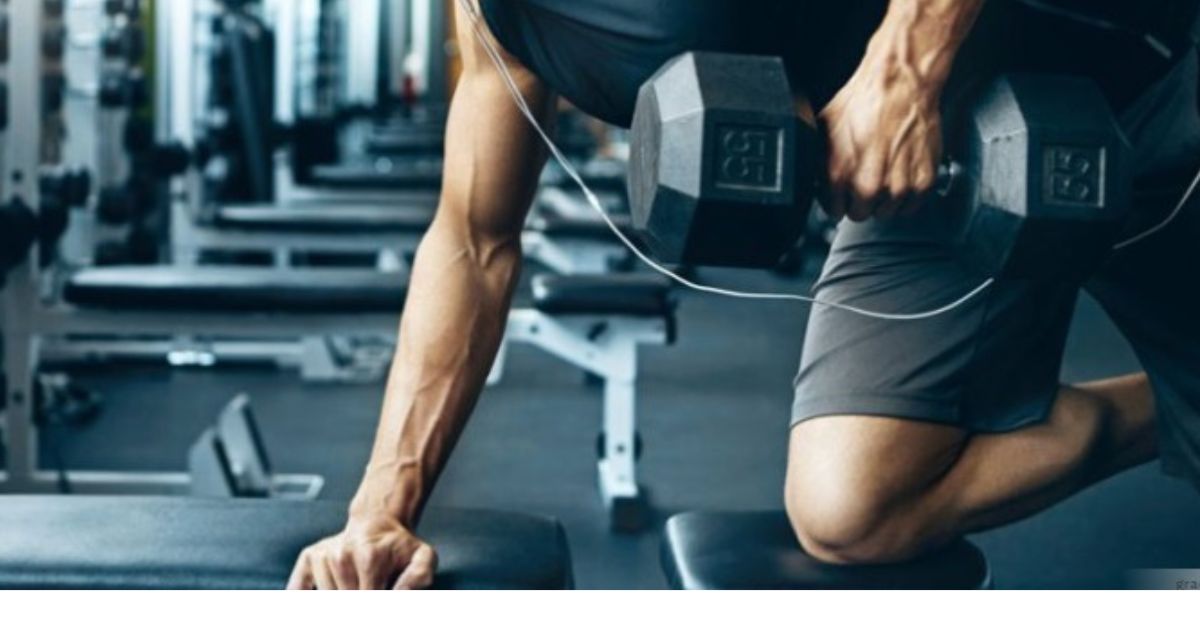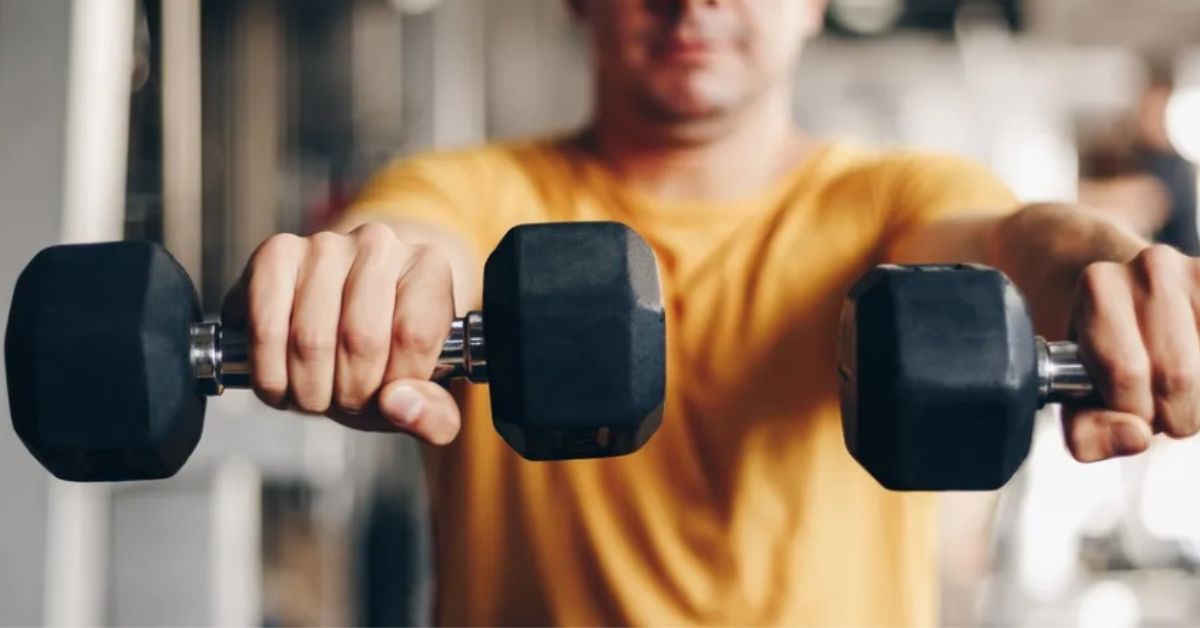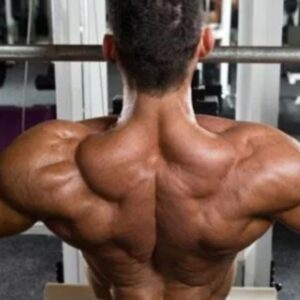Hypogonadism is a condition where the gonads (testes in males, ovaries in females) experience inadequate production or impaired function of the sex hormones namely testosterone in males and estrogen in females. Hypogonadism can manifest at any stage of life and can either be present from birth (congenital) or develop later in life (acquired).
Testosterone and estrogen are essential for the development and functioning of reproductive organs, sexual characteristics and overall well-being. Testosterone plays a crucial role in various aspects of male physiology including its influence on the production of sperm, the density of bones, the development and maintenance of muscle mass and the regulation of sex drive. Estrogen plays a vital role in various aspects of female physiology including regulation of menstrual cycles, maintaining bone health, supporting sexual function and promoting overall hormonal balance.

Hypogonadism can be determined by blood tests by measuring the total testosterone levels in males, assessing sex hormone-binding globulin (SHBG) levels, measuring luteinizing hormone (LH) and follicle-stimulating hormone (FSH) levels to evaluate pituitary function. Both males and females undergo evaluation of estradiol levels and in some cases; prolactin levels may also be assessed. Thyroid-stimulating hormone (TSH) and thyroid hormone levels may be measured to evaluate thyroid function which can influence the production of reproductive hormones. In situations where congenital hypogonadism or specific genetic disorders related to hormonal imbalances are suspected, genetic testing may be advised as a recommended course of action.
It is crucial to comprehend and effectively handle hypogonadism to restore hormonal equilibrium, alleviate symptoms and address any potential health risks associated with the condition. Seeking medical attention and guidance from healthcare professionals, such as endocrinologists, is crucial to diagnose and manage hypogonadism effectively.
Exploring Primary And Secondary Hypogonadism
- Primary Hypogonadism: Also known as primary gonadal failure, it occurs when there is a problem with the gonads themselves, leading to decreased hormone production. In males, this condition can arise when the tests fail to produce an adequate amount of testosterone. This can be caused by genetic conditions, testicular injuries, and infections like mumps orchitis, chemotherapy treatments and autoimmune disorders.Among women, ovarian failure results in decreased estrogen production which can also be caused by genetic conditions, autoimmune disorders, chemotherapy and premature ovarian failure.
- Secondary Hypogonadism: Also known asa central or secondary gonadal failure, this type of hypogonadism occurs when there is a problem with the hypothalamus or pituitary gland, which is responsible for signaling the gonads to produce hormones. Hypothalamic and pituitary gland dysfunction can happen because of tumors, infections or surgery. Hypothalamic dysfunction can disrupt the production and release of gonadotropin-releasing hormone (GnRH), which signals the pituitary gland to produce follicle-stimulating hormone (FSH) and luteinizing hormone (LH). The pituitary gland dysfunction can impair the production and release of FSH and LH, which are essential for stimulating the gonads to produce hormones.
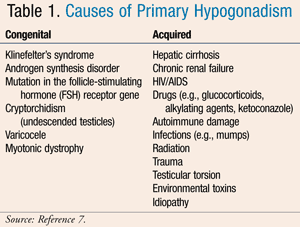
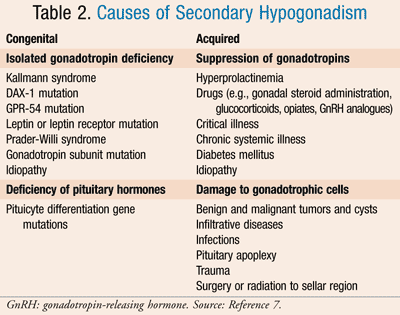
Effects of Hypogonadism in Males:
- Sexual Dysfunction: Hypogonadism can lead to reduced libido, erectile dysfunction, and difficulties with achieving or maintaining erections.
- Infertility: Low levels of testosterone can result in decreased sperm production and fertility issues.
- Physical Changes: Men with hypogonadism may encounter symptoms such as decreased muscle mass, diminished growth of body hair, underdeveloped genitals and decreased bone density.
- Mood Changes: Hypogonadism can contribute to mood swings, irritability and a general reduction in energy levels.
- Cognitive Changes: Certain studies indicate a potential association between low testosterone levels and cognitive decline which may manifest as challenges with memory, concentration and overall cognitive function.
Effects of Hypogonadism in Females:
- Menstrual Irregularities: Hypogonadism can result in irregular or absent menstrual periods which can affect fertility and reproductive health.
- Reduced Libido: Reduced levels of estrogen and testosterone can cause a decline in sexual desire and satisfaction.
- Changes in Secondary Sexual Characteristics: Women with hypogonadism may encounter delayed or impaired breast development, absence of public hair growth and an absence of typical body contours.
- Bone Health: Estrogen plays a crucial role in maintaining bone density, and hypogonadism can increase the risk of osteoporosis and bone fractures in females.
- Mood Changes: Hypogonadism may contribute to mood swings, irritability, and depressive symptoms in females.
It’s important to note that the specific effects and severity of hypogonadism can vary depending on factors such as the age of onset, the underlying cause, and individual variations. Regular monitoring and close collaboration with healthcare professionals are crucial for maximizing treatment outcomes and addressing any potential complications or concerns related to hypogonadism.
Hormone Replacement Therapy (HRT):
Hormone replacement therapy (HRT) is a common treatment approach for individuals with hypogonadism to restore hormonal balance and alleviate symptoms. The type of hormone replacement therapy (HRT) prescribed is determined by factors such as the individual’s gender, age, underlying cause of hypogonadism and overall health.
Here are the different types of hormone replacement therapies used for hypogonadism:
Testosterone Replacement Therapy (TRT) for Men: Testosterone replacement therapy is the primary form of HRT for men with hypogonadism. It involves administering exogenous testosterone to supplement the inadequate production of testosterone by the testes. TRT can be delivered through various methods, including:
- Injections: Testosterone can be administered through intramuscular injections into the muscles at regular intervals typically every few weeks.
- Topical Applications: Testosterone gels, creams, or patches can be applied to the skin daily, allowing absorption through the skin into the bloodstream.
- Buccal Tablets: Testosterone buccal tablets are placed against the gums and slowly dissolve to release testosterone into the bloodstream.
- Subcutaneous Implants: Small pellets containing testosterone can be inserted under the skin, providing a slow release of testosterone over several months.
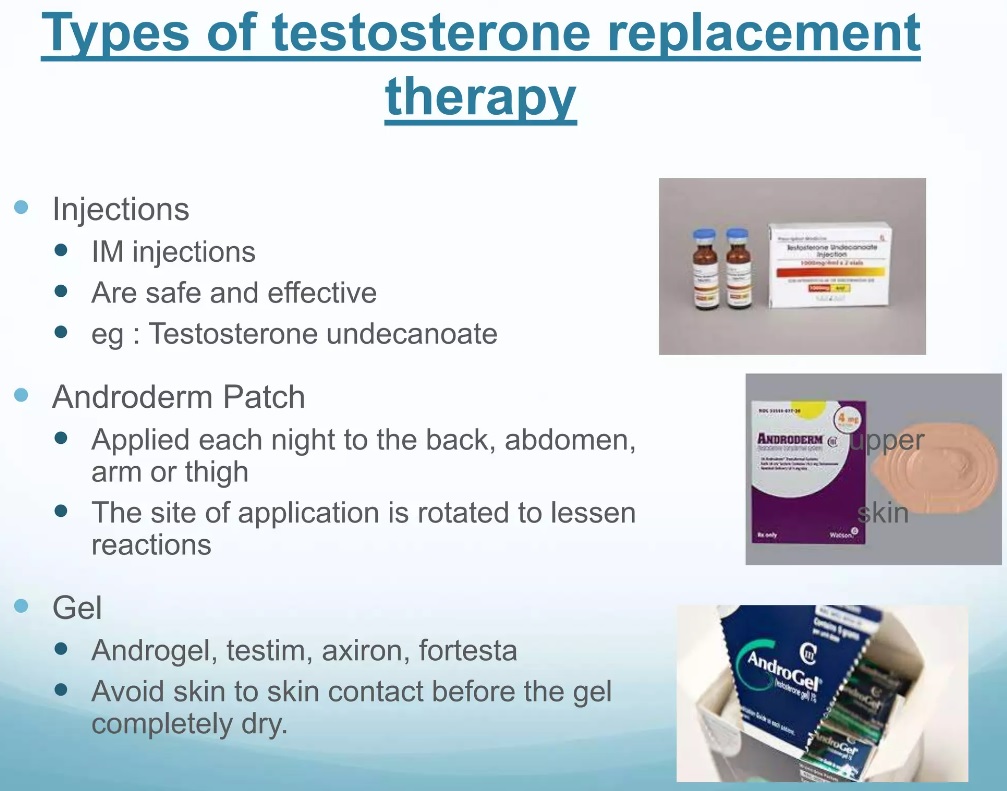
Estrogen and Progesterone Replacement Therapy for Women: Estrogen and progesterone replacement therapy is prescribed for women with hypogonadism, especially those experiencing menopausal symptoms or menstrual irregularities. This HRT involves the administration of estrogen (with or without progesterone) to restore hormone levels. Estrogen can be delivered in various forms, including:
- Oral Tablets: Estrogen can be taken orally as tablets or pills.
- Transdermal Patches: Estrogen patches are applied to the skin, allowing absorption of hormones through the skin.
- Topical Creams or Gels: Estrogen creams or gels can be applied to the skin and absorbed into the bloodstream.
- Vaginal Forms: For localized symptoms, such as vaginal dryness, estrogen can be administered directly to the vagina using creams, tablets, or vaginal rings.
Potential Side Effects and Risks of Hormonal Replacement Therapy
HRT may be associated with potential side effects, which can vary depending on the type of hormone being replaced. Typical side effects may encompass acne, fluid retention, breast tenderness or enlargement, mood swings, headaches and alterations in cholesterol levels. It is crucial to discuss potential side effects with your healthcare provider and report any concerns promptly.
Hormone replacement therapy particularly when used for a prolonged period may also entail certain risks. For example, in women, long-term use of estrogen replacement therapy alone (without progesterone) may increase the risk of uterine cancer. For women who have a uterus, combination therapy involving estrogen and progesterone is typically advised to minimize this risk. Similarly, long-term use of HRT in men may have implications for prostate health, and regular monitoring is typically advised.
Hormone replacement therapy should be customized to address the unique needs of each individual taking into account their health history and risk factors. It is important to work closely with a knowledgeable healthcare provider who can assess your unique situation, guide you through the decision-making process, and monitor your progress to ensure optimal treatment outcomes.
Alternative Treatment Options: Lifestyle Modifications and Natural Remedies
In addition to hormone replacement therapy, there are alternative treatment options and lifestyle modifications that may be considered for managing hypogonadism. It’s important to note that these alternative approaches may not replace the need for HRT in some cases, particularly when hypogonadism is caused by primary gonadal failure. However, they can complement medical interventions and promote overall well-being. Here are some alternative treatment options and lifestyle modifications to consider:
- Healthy Diet: Adopting a well-balanced diet that incorporates a wide range of nutrient-dense foods can promote overall hormonal well-being. Some specific foods that may help promote hormonal balance include those rich in zinc (such as oysters, beef, and pumpkin seeds) and omega-3 fatty acids (found in fatty fish like salmon, walnuts, and flaxseeds).
- Regular Exercise: Participating in regular physical activity and sustaining a healthy weight can have a beneficial effect on hormone levels and overall well-being.Both cardiovascular exercise and strength training can contribute to improved hormonal balance and increased muscle mass.
- Stress Management: Chronic stress can negatively impact hormone levels. Practicing stress management techniques like meditation, deep breathing exercises, yoga, or engaging in hobbies can help reduce stress and promote hormonal balance.
- Quality Sleep: Prioritize getting adequate sleep and establishing a consistent sleep routine. Sufficient sleep is essential for hormonal regulation and overall well-being.
- Herbal Remedies: Some herbal remedies and supplements are believed to have potential benefits for hormonal balance. However, it is important to approach herbal remedies with caution and consult with a healthcare professional before using them, as they can interact with medications or have adverse effects. Examples of herbs commonly used include ashwagandha, maca root, black cohosh, and Tribulus Terrestris.
- Weight Management: Maintaining a healthy weight and preventing obesity is vital for achieving hormonal balance. Excessive body fat especially in the abdominal region can contribute to hormonal imbalances.
- Smoking and Alcohol: Quitting smoking and limiting alcohol consumption can support overall health, as smoking and excessive alcohol intake can disrupt hormone production and metabolism.
Fertility Options and Assisted Reproductive Techniques for Individuals with Hypogonadism
Individuals with hypogonadism who desire to conceive may explore various fertility options and assisted reproductive techniques to overcome fertility challenges. The selection of a specific approach for managing hypogonadism will depend on various factors including the underlying cause of the condition, the individual’s reproductive health and the guidance provided by healthcare professionals. Here are some fertility options and assisted reproductive techniques that may be considered:
- Hormone Replacement Therapy (HRT): In some cases, hormone replacement therapy can help restore hormonal balance and improve fertility. By optimizing hormone levels, HRT may stimulate the development and release of eggs in females and improve sperm production in males.
- Ovulation Induction: Ovulation induction involves the use of medications to stimulate the ovaries to produce and release mature eggs. This approach is commonly used in women with hypogonadism who have difficulty ovulating naturally.
- Intrauterine Insemination (IUI): In IUI, sperm is washed and prepared in a laboratory, and then inserted directly into the uterus during the woman’s fertile period. This technique can improve the chances of sperm reaching and fertilizing an egg.
- In Vitro Fertilization (IVF): IVF involves the retrieval of eggs from the woman’s ovaries, fertilizing them with sperm in a laboratory, and then transferring the resulting embryos into the uterus. IVF is a highly effective assisted reproductive technique and can be particularly helpful for couples with severe fertility issues.
- Intracytoplasmic Sperm Injection (ICSI): ICSI is a specialized form of IVF where a single sperm is directly injected into an egg to facilitate fertilization. This technique is beneficial when there are concerns about sperm quality or quantity.
- Donor Gametes: In cases where hypogonadism affects the individual’s ability to produce viable eggs or sperm, the option of using donor eggs or sperm may be considered. Donor eggs or sperm can be obtained from screened and medically evaluated donors to facilitate fertilization.
Psychological and Emotional Support:
Hypogonadism can have a significant emotional impact on individuals due to its effects on sexual development, fertility, body image, and overall well-being. It is essential to recognize and address the emotional aspects of living with hypogonadism, and the importance of support networks and mental health care. Here are some key considerations:
- Psychological Impact: Hypogonadism can lead to emotional distress, feelings of inadequacy, body image concerns, and challenges related to self-esteem and self-confidence.
- Communication and Education: Open and honest communication with healthcare providers, partners, family, and close friends is crucial. Educating oneself about hypogonadism, its effects, and available treatment options can empower individuals to make informed decisions and effectively communicate their needs and concerns.
- Support Networks: Building a support network of understanding and empathetic individuals can be immensely beneficial. Connecting with others who share similar experiences, such as support groups or online communities, can provide emotional support and practical advice.
- Mental Health Care: Seeking professional help from mental health professionals, such as psychologists or counselors, can be very valuable. These professionals can provide guidance, coping strategies, and support for managing stress, anxiety, depression, and body image issues.
- Partner and Family Support: Involving partners and family members in the journey of managing hypogonadism can foster understanding, empathy, and emotional support. Encouraging open communication and sharing feelings and concerns can strengthen relationships and create a supportive environment.
- Self-Care and Coping Strategies: Engaging in self-care practices and coping strategies can help manage emotional well-being. This may include activities such as exercise, mindfulness, and relaxation techniques, pursuing hobbies, or seeking creative outlets.
Some Common Questions About Hypogonadism
Is hypogonadism more common in men or women?
Hypogonadism can affect both men and women, but it is more commonly recognized and diagnosed in men. The prevalence of hypogonadism in men increases with age, while hypogonadism in women is less common but can occur because of primary ovarian insufficiency or hormonal abnormalities.
Can lifestyle changes, such as diet and exercise, help manage hypogonadism?
Maintaining a balanced diet that includes nutrient-rich foods and engaging in regular physical activity can help optimize overall health, promote hormonal balance, manage weight, improve bone health, and enhance well-being. While lifestyle changes may not replace the need for medical interventions, they can complement treatment and contribute to the overall management of hypogonadism.
Is hypogonadism reversible, or is it a lifelong condition?
Whether hypogonadism is reversible or lifelong depends on the underlying cause and individual circumstances. In some cases, hypogonadism may be reversible with appropriate treatment, such as hormone replacement therapy or addressing the underlying condition. However, in certain genetic or permanent conditions, hypogonadism may be a lifelong condition that requires ongoing management to optimize hormone levels and address associated health concerns.
Can hypogonadism be managed without medication or hormone replacement?
In some cases, the management of hypogonadism without medication or hormone replacement may be possible, depending on the underlying cause and individual circumstances. Lifestyle modifications, such as a healthy diet, regular exercise, stress management, and weight management, can help support overall well-being and potentially improve symptoms associated with hypogonadism. However, it is important to note that medication or hormone replacement therapy may be necessary in many cases to effectively manage hypogonadism and restore hormonal balance.
Are there any alternative therapies or natural remedies for hypogonadism?
While there are various alternative therapies and natural remedies that are sometimes suggested for hypogonadism, such as herbal supplements or dietary changes, their efficacy and safety have not been extensively studied or proven. It is important to consult with a healthcare professional before considering any alternative therapies, as they may not provide sufficient hormonal replacement and could potentially interfere with other medications or underlying conditions.
How often should individuals with hypogonadism be monitored by a healthcare professional?
The frequency of monitoring for individuals with hypogonadism may vary depending on factors such as the underlying cause, treatment approach, and individual needs. Typically, healthcare professionals will recommend regular follow-up visits and periodic blood tests to assess hormone levels, evaluate treatment effectiveness, monitor potential side effects, and make any necessary adjustments to the treatment plan. The specific monitoring schedule should be determined in consultation with a healthcare professional.

